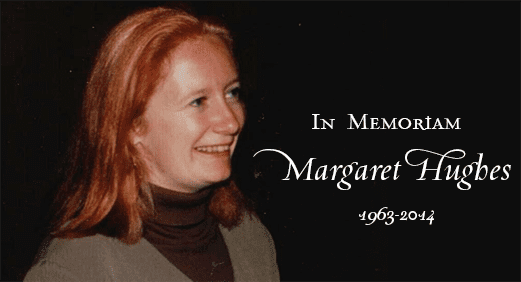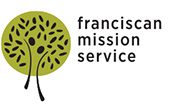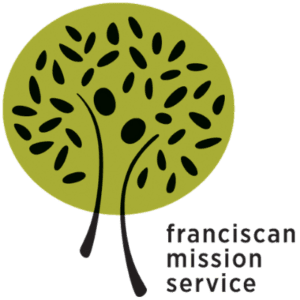The Search for the Heart – Remembering Margaret

It is with great sadness that we share news of the death of Margaret Hughes, a returned missioner and former board member.
Margaret passed away at the age 51 on Christmas Day after a long battle with stage IV breast cancer, leaving behind Eddie, her husband of 15 years, and Thomas, her 12-year-old son. Having a true heart for social justice, Margaret was a passionate and dedicated community organizer and served as executive director of Brooklyn Congregations United for five years.
As a Franciscan lay missioner, she served in Kenya from 1992 to 1994 where she was a high school teacher, guidance counselor, librarian, and dorm mistress for Kikuyu and Kimeu students. “Mission,” she said, “was a chance to be in a place where people saw God in their daily lives.”
In 2010, Margaret wrote a little on those daily lives for our “Book of Memories.” Today we share that reflection from her time in Kenya as we lift up Margaret and hold her family in prayer. May we remember her for her wonderful spirit, and may her words encourage us to follow her example and examine our own hearts.
Peeling through the layers of memory is hard; Mt. Kenya is fuzzy in the distance. Not as it was when I lived in Timau – it was a clear presence. Now I look back and I wonder can I have been there. It seems like a rerun of a movie I only partially watched. What stories can I tell from a land where stories began?
“The monkey threw the stone at the crocodile’s head and said, take my heart,” read Mercy. Prudence asked if the monkey had been wise to take a ride across the river from the crocodile in order to return home. The class had just finished reading fables from the oral literature tradition.
Just then the rain pounded on the tin roof so loud that I couldn’t teach. I give the girls a reading assignment and run back to the staff room where everyone is enjoying the unexpected holiday. It’s almost teatime and the ritual of the glasses with the chai with bread served by Pinina the Matron is about to begin. I hold the hot glass of brown sweet substance to my nose warming myself in its fragrance. The other teachers lapse into Kimeru and chat about the world.
As I looked out the staff room door, I watched the girls glide across the field, their shoes barely touching the earth. A gracefulness with their contact with the earth that I in my mud boot did not have. I watched as they kept their upper shoe clear, as mine had shucked in the brown gooey earth.
This was the first rainy season we had had in the year and a half that I had lived Timau. I had grown used to the dry dusty land and now it as a new place muddy — green with brown rivers running into town.
In the afternoon when the rain stopped, I walked into town. The mud had almost dried. I walked to the post office for my daily connection with home. I picked up the letters and met Patricia walking back to school. Patricia had a three-month-old daughter named Makena, meaning joy. She certainly is a joy.
In class the next day we spoke further about the monkey and crocodile. Florence read her summary of the tale. The unsuspecting monkey had been offered a ride by the crocodile to his home. When the monkey was on the crocodile’s back, the crocodile threatened the monkey by saying, “I want to eat you.” The monkey’s response was that the tastiest part of any monkey was its heart, “So wait until we get to where I live and I will retrieve my heart where it is kept for safekeeping and then I will give it to you.” The croc agreed and took the monkey to the place it lived. The monkey scrambled off, climbed the tree and took a coconut and threw it at the croc shouting, “Here is my heart!”
The search for the heart. We talk about the image of safekeeping the heart. What does this mean? Is it wise to put your heart in a tree?
After school, I take a matutu into Nanyuki and at the bus station I see Patrick. He is a street boy who I often saw in town. We went for a walk and then had lunch together. He was probably 10 or 11, but had looked about 7. I bought him a shirt and a pair of shoes. I headed back to school.
The next day after classes, I washed my clothes in the afternoon. It did not seem that it would rain any more that day. Not the traditional scrubbing but my own Western method of soaking the stains away. I wore long shorts, a baggy shirt and had suds everywhere. The students who were tending their agricultural plots watched my efforts and laughed with me.
I chased them trying to maintain some dignity as the teacher. I thought: What did I have to learn from the oral tales of monkeys and crocodiles…Do I know where my heart is? Do I keep it for safekeeping? DO I use coconuts instead of my heart to interact?
Where is my Heart?
On the way to Mass, the light would get brighter as the sun rose at 7 a.m. The girls clothed in their uniforms, covered with Kangas and wearing woolen leg warmers walked to the church. Some mornings it was quite chilly and they would run after church to the dining room for their morning chai watered down by Michael, the cook.
In the afternoons, I ran with them when they went for their town-mile run through the farm area. They laughed at me and we enjoyed it.
And now I ask myself again where is my heart now that I live in New York City.
Patrick Dorismond. He is the young man killed by a police officer. He is from Haiti. I went to his funeral. It was like being back in Kenya as one of a handful of white people with the black community. The Haitians were justifiably angry because of Mayor Giuliani’s hard-line approach to the death of this 26-year-old young man. No matter what I do or how I acculturate to the US I cannot just be a silent stander by or issues of death. I must join my voice with those of the victims of injustice.
I have a heart. My heart cannot become a coconut-hard, prickly. It must be soft and tender ready to be eaten by the croc because that is my call to mission.
Margaret’s family has asked for memorial gifts to be made to Maimonides Medical Center.
Tagged in:

